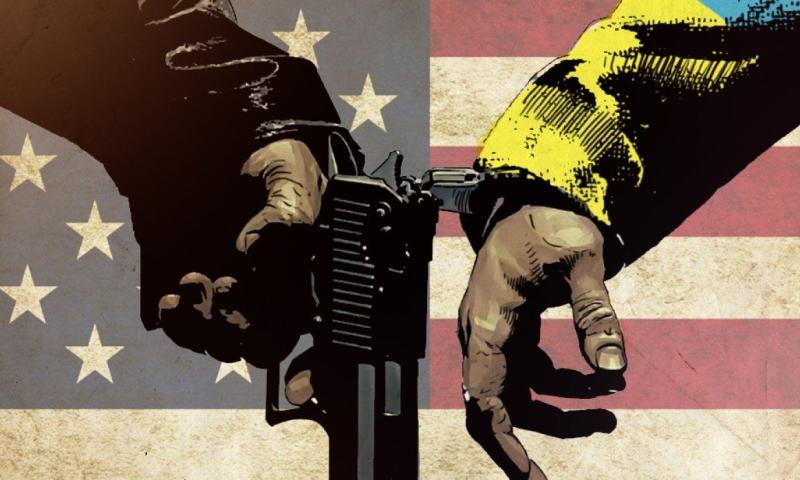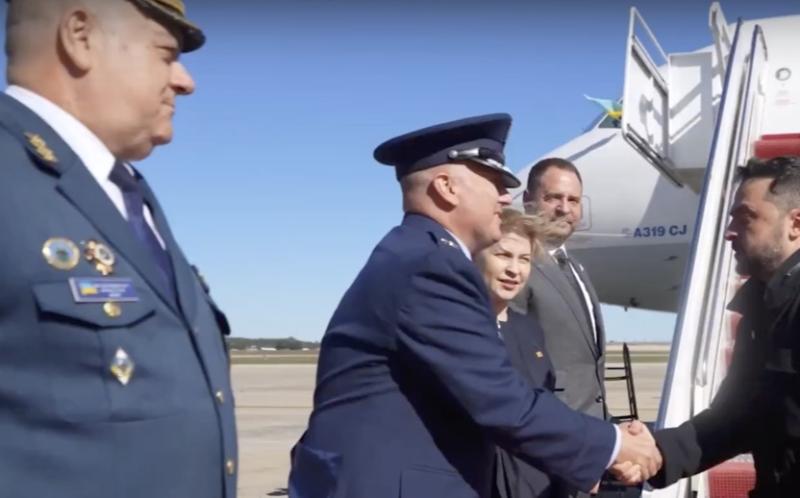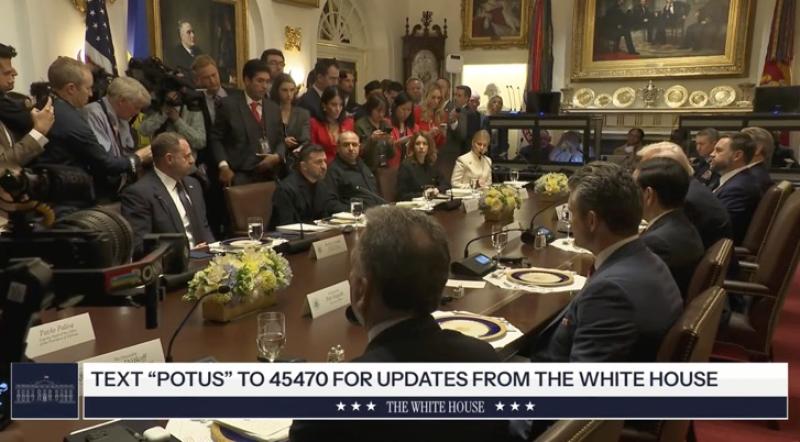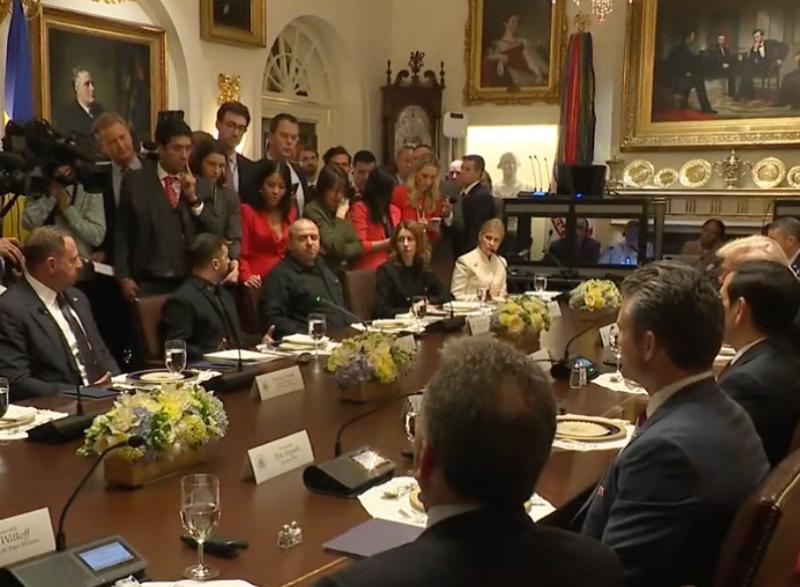
Two days that may shake the world
Introduction
When Ukrainian leader Zelensky boarded his plane in Poland on October 16, 2025, to fly to Washington for another meeting with US President Donald Trump, his view of the world and that of his loyal European sponsors was still in the desired order. A flight to Washington, a meeting with President Trump, finalization of Tomahawk deliveries. Then a return to Europe, with the usual stopover in London to celebrate the results and determine further steps against the Ukrainian people, against an early peace, and thus for a continuation of the war.
Things turned out differently.
President Putin steps in
While Zelensky was flying over the Atlantic, Russian President Putin took the initiative and picked up the phone to call his counterpart in the US. This was confirmed by Yuri Ushakov, the Russian president's advisor. The timing was well chosen. The acting president of Ukraine was cut off from his European advisors and thus left to his own devices. He was not prepared for this scenario.
During the two-hour phone call, Presidents Putin and Trump agreed on a program for the next two weeks or so that could significantly influence the course of history. They decided to meet in Budapest. They did so in consultation with Hungarian Prime Minister Victor Orban.
There, they want to achieve nothing less than discussing and establishing the basis for ending the conflict in Ukraine. No concrete details are known. However, given the timing and the absence of the usual background noise – especially from political Europe and NATO – it is quite possible that both sides are prepared to agree on a course of action that could actually bring about a breakthrough.
The agreements reached by telephone struck a chord with both European leaders – above all Starmer, Macron, Merz, and von der Leyen – and NATO.
Presidents Putin and Trump agreed on the Hungarian capital Budapest as the venue for the meeting. They will therefore meet with the black sheep of the EU and NATO, Hungarian Prime Minister Victor Orban, a proven critic of Ukraine and advocate of a rational approach to Russia. NATO, Europe, and especially Ukrainian leader Zelensky have been attacking Orban more and more openly in recent weeks, accompanied by threats for his policies. In Hungary, there are now serious indications that the Ukrainian secret service SBU is infiltrating the right-wing Hungarian party Jobbik in order to force a change in politics and power in Hungary.
Slovak Prime Minister Robert Fico, who is regarded in the EU and NATO as being on almost the same level as Victor Orban, immediately declared his full support for the summit, if needed.
The decision to choose Budapest strengthens Hungary's international role and, even more so, that of its prime minister. On the other hand, choosing Budapest without consulting the European and NATO leaders amounts to humiliating them.
But that's not all: Hungary is an EU landlocked country. With the exception of Serbia, it is surrounded exclusively by NATO and EU countries. Serbia, for its part, is completely surrounded by NATO and EU countries. This means that Russian President Putin will definitely have to fly over NATO and EU countries on his way to the summit, i.e., areas that have been closed to all Russian aircraft since February 2022.
NATO and the EU do not even allow exceptions for diplomats. In this context, it should be remembered that NATO countries did not grant Russian Foreign Minister Lavrov overflight permission for a planned visit to Serbia.
In addition, with the exception of Hungary, all EU and NATO countries eligible for overflight are member states of the International Criminal Court (ICC), which in turn has issued an arrest warrant under Article 58 of the Rome Statute for the Russian president, who allegedly abducted Ukrainian children from Ukraine.
Rome Statute of the International Criminal Court states the following regarding the arrest procedure:
„1. A State Party which has received a request for provisional arrest or for arrest and surrender shall immediately take steps to arrest the person in question in accordance with its laws and the provisions of Part 9.“
Artikel 59 des römischen Statuts
However, since Presidents Trump and Putin decided on the location of the meeting without consulting the EU and NATO, they are clearly very confident that neither NATO nor the EU will dare to take action to arrest the Russian president. This amounts to further humiliation for NATO, the EU, and their institutions.
Appearance of Volodymyr Zelensky
On October 16, 2025, Volodymyr Zelensky landed at Andrews Air Force Base near Washington. Only his own people were waiting for him when he got off the plane.

In addition to presidential advisor Yermak, who was already in the US, he was greeted at the foot of the gangway, for lack of alternatives, by the pilots who had just flown him to the US. This is likely to be a unique occurrence.
No official US representative deemed it necessary to greet him in Washington, let alone welcome him. An affront similar to that experienced by EU President von der Leyen in China a few weeks ago. What followed for von der Leyen at that time had nothing to do with an exchange of views or even a meeting on equal terms. The Chinese made their position clear to her in a one-sided lecture that bordered on the diplomatically unacceptable and sent her home on a commercial flight without a statesmanlike farewell.
It didn't come to that in Washington. But Zelensky could be warned.
Donald Trump's appearance
The following program was planned for the meeting between the American president and Ukrainian leader Zelensky:
Press conference with both presidents before the negotiations
Negotiations over a joint lunch
Farewell
A joint press conference after the negotiations was not planned and did not take place.
The images from the press conference are publicly available. They show a US president who, even before the negotiations, makes it clear to the Ukrainian leader who is in charge and that he would under no circumstances allow a repeat of the scandalous meeting with Zelensky on February 28, 2025.

The press conference took place in the same room where the two delegations subsequently dined. The delegations sat opposite each other at the negotiating table, as is customary on such occasions. The American hosts organized the question and answer session in such a way that the journalists stood crowded behind the Ukrainian delegation, so that only the US representatives were comfortably seated opposite those asking the questions. Volodymyr Zelensky had to repeatedly turn uncomfortably backwards while seated in order to even see those asking the questions and then answer them in the same uncomfortable position.

If he did not turn around, he was forced to look directly at Donald Trump and the other members of the American delegation when answering questions.
Whether this arrangement was intentional or not remains to be seen. In any case, it certainly had an effect. Zelensky noticeably lacked his usual free interaction with his audience.
US President Donald Trump also spoke up when the question was directed at Volodymyr Zelensky, but Donald Trump felt he had to set the tone. This was the case, for example, with a question about the children allegedly abducted by Russia. Donald Trump made it clear that it was a matter close to the American First Lady's heart to be active on this issue. This slowed Volodymyr Zelensky down.
After the negotiations
The negotiations themselves also had an effect on the Ukrainian president. In boxing, a knockout blow is when a combination of punches clearly influences and predetermines the outcome of a fight. Volodymyr Zelensky's appearance before the press after the negotiations suggested that this was the case.
He initially postponed it in order to inform his European sponsors via video conference about the results, which he considered unsatisfactory, and – as his press appearance suggested – to find his footing. In his answers, he appeared erratic, unfocused, shaken, with his mind elsewhere and anything but confident.
Conclusion
On October 16, 2025, the Ukrainian president confidently boarded his plane to the US. He did so believing that he had finally found a lever, together with his European sponsors, to directly involve the US and thus NATO in the war in Ukraine by getting Tomahawk cruise missiles, in order to finally bring Russia to its knees. When he disembarked in Washington just a few hours later, it was obvious to the whole world that his only concern was to save face during his two days in the US.
In the days leading up to Zelensky's trip, there was much talk in the West about how the Russian president was acting too indecisively and the Russian army too cautiously to achieve its goals. A very well-timed phone call with the American president, combined with apparently very substantial proposals, was enough to leave the entire European political elite speechless for days and possibly break a knot that had previously been impossible to untie.
Both the venue of the planned summit and the timing of the announcement to the world expose the entire bellicose West. The finesse of Russian diplomacy involved in this makes it clear to those who want to see that it is negotiations, not more and more weapons, that end wars.
If Russia succeeds in preventing or at least minimizing the provocations that are certain to come from the warmongers in the run-up to Budapest, and if a breakthrough is actually achieved in Budapest, the impact on the political landscape in Western Europe is likely to be considerable.
«Two days that may shake the world»